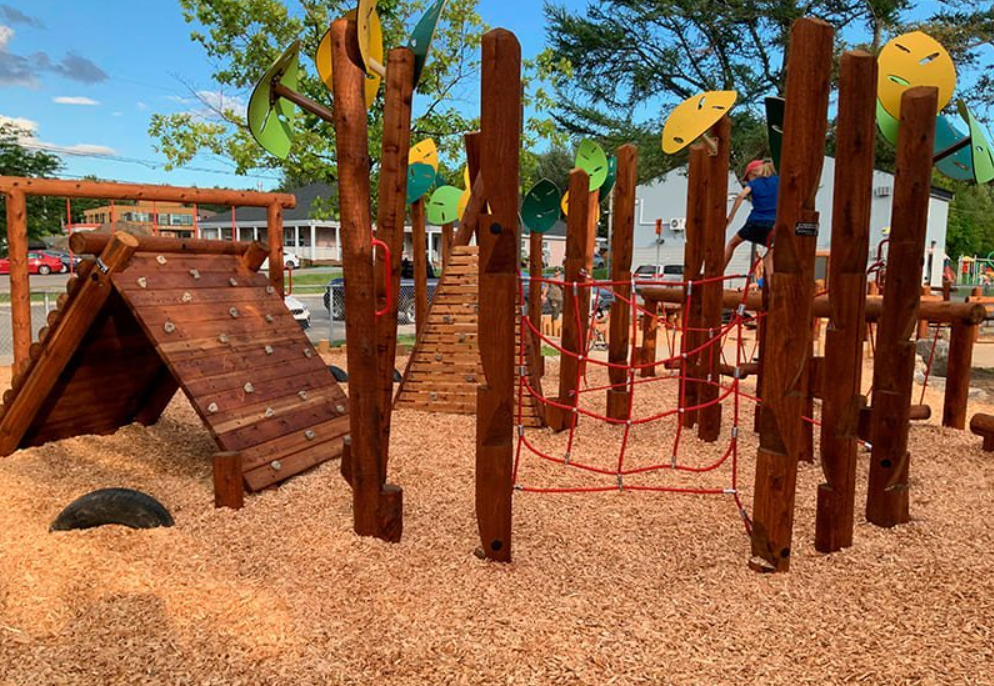In the digital age, children are exposed to a lot of technology and screens, which can limit their time outdoors and their connection with nature. However, wooden play structures in parks and gardens can provide a necessary balance and foster children’s connection with their environment. This article will explore the importance of wooden play structures in the digital age and how they can help children connect with nature.
Outdoor movement
Wooden play structures offer a safe and fun way for children to explore and move outdoors as they encourage physical activity, which is essential for healthy development. Children can run, jump, climb, and balance on wooden play structures, developing fine and gross motor skills and improving their balance and coordination.
Imagination in the wild
Wooden play structures encourage children’s creativity and imagination as they are more versatile than plastic and metal play structures, allowing children to use their imagination and create games and adventures. Children can turn a wooden play structure into a castle, a boat, or anything; they can also play in a jungle, a savannah, or any environment they wish, as these are not structured games or limited by the set pattern of a video game.
Respect for the environment
Another advantage of wooden play structures is that they are a sustainable and environmentally friendly way to provide a play place for children as they are made from a natural and renewable material, which means they are a more eco-friendly option than play structures made from other materials. In addition, they have high resistance, so they can last for many years, which reduces the need to replace them frequently.
Another critical point is that children can be in direct contact with the environment, which can help them identify elements such as leaves, insects, or other small animals, know the direction of the wind or where the sun rises and sets, so they can also reinforce the knowledge taught in the classroom.
Connecting with the Environment
Wooden play structures can help children connect with nature, as children spend more and more time indoors and in front of screens, which can limit their exposure to nature and their ability to appreciate it. Wooden play structures in parks and gardens can provide an essential connection to nature, as children can play surrounded by trees, grass, and other natural elements. This is important for children’s emotional and mental well-being as exposure to nature has been associated with decreased stress, improved mood, and increased attention span and concentration.
Additionally, wooden play structures can encourage socialization and connection among children as they are shared play places where children can interact and play together. Children can learn social skills such as sharing, cooperation, and conflict resolution while playing.
What do you think about this topic? Do you want to know more about wooden play structures?
If you are interested in Wooden play structures, you can contact us by visiting the following link.
